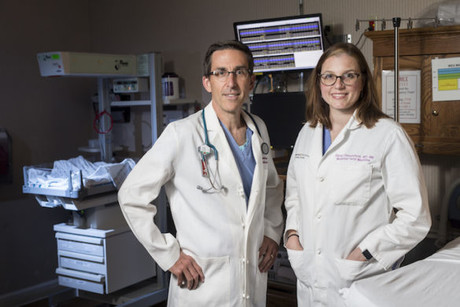Study: Caesarean patients sent home with more narcotic pain medications than needed

Most women who undergo a caesarean childbirth are prescribed more opioid (narcotic) pain medications than needed upon release from the hospital, a Vanderbilt University Medical Center (VUMC) study shows.
The study, Postdischarge Opioid Use After Cesarean Delivery, followed 179 caesarean patients from VUMC over an eight-week period to examine the variation in opioid prescribing and consumption after caesarean delivery, the most common major surgical procedure performed in the United States. The study found that many patients with a 30-day prescription believe they are supposed to take the pills until they are all gone, when in fact, they only need to take them when absolutely needed. Normally over-the-counter pain relievers such as ibuprofen or Tylenol are sufficient in controlling post-caesarean pain.
“What we found is that prescribers … have kind of a one-size-fits-all prescription model for patients when they are discharged from the hospital,” said Dr Sarah Osmundson, co-author of the study. “There’s so much attention around excess opioids and the growing problem with opioid addiction, and the question came up, how much are patients really using when they go home.”
Dr Michael Richardson, co-author, said more attention needs to be paid to patients’ opioid use while they are still inpatients in the hospital to better predict their use after going home. “If the patient is not using very much in the hospital, why should they go home with a prescription for 30 oxycodone tablets?”
The study found that most women (83%) used opioids after discharge for an average of eight days, and of the women who filled their prescriptions (92%), 74% had unused tablets. The majority (63%) stored their pills in an unlocked location in their home, which is another cause for concern, Osmundson said.
The number of opioid overdose deaths in the United States has quadrupled in 15 years, a dramatic result of the current opioid abuse epidemic. The rise correlates with a sharp increase in the amount of legal prescription opioids dispensed. Most individuals using prescription opioids for non-medical purposes have obtained them from family members or friends who have been prescribed the medications.
Osmundson and Richardson plan further study to determine whether in-hospital opioid use can guide postdischarge prescribing to reduce opioids without undertreating pain.
“If we can find a more nuanced way to prescribe, we can do a lot to reduce the excess opioids out there,” Osmundson said.
The study was published online June 8 in Obstetrics and Gynecology, the official publication of the American College of Obstetricians and Gynecologists (ACOG).
Non-invasive 'virtual' biopsy for skin cancer diagnosis
Researchers have developed a new imaging method that allows clinicians to analyse the skin...
UTI vaccines could prevent infection for nine years
MV140 is a new vaccine for recurrent UTIs and is administered with two sprays of a...
What's the key to retaining rural GPs?
Understanding doctors' decisions to stay or leave, once recruited, could provide insights on...










